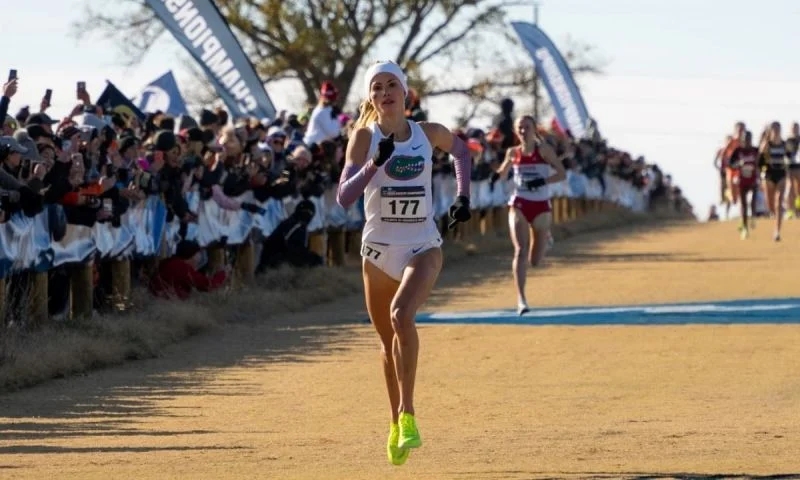University of Florida junior Parker Valby ran away from the pack to win the 2023 NCAA Division I womens XC championships (she also won the 2023, NCAA 5000m track title). She only runs 2-3 days/week. How was she able to do that with so little running? Low-impact cross training.

Valby had some injuries in 2022 that kept her from running. She adopted low-impact cross training to stay fit, and has kept that pattern up since. Her non-running workouts include:
- Arc Trainer (elliptical like, but with a motion that better imitates running.
- Elliptical.
- Pool running.
Low-impact doesn’t necessarily mean easy. Valby says that she works so hard on the equipment, sweats so much, that they put signs out reading “Caution, Wet Floor” when she’s working out.
Running is a high stress exercise. Such cross-training not only reduces the impact stress, but the controlled range of motion reduces soft tissue strain. It can’t replace running, but it can go a log way to improving your fitness with low risk.
Success in endurance sports is built on a large, aerobic base. A big aerobic base is the foundation of the Norwegian Training Method. An aerobic base can be built on almost any aerobic exercise. Rowing, biking, stair stepper, swimming (Parker was a competitive swimmer before she got into running), and nordic skiing are other examples of low-impact exercise that are great in building your general aerobic fitness.
Low-impact training can be a great way to add mileage without adding mileage. The impacts of running make it hard to ramp up mileage quickly. Adding some low-impact training can be safer. For example, instead of doubling (two runs in a day), substitute the second run with a bike ride or elliptical.
Low-impact is a great way to stay fit when injured. Currently, I’m dealing with lingering bursitis/tendonitis that makes running hard. While I’m letting my body heal, I’ve been doing a lot of biking. Now that it’s getting cold, I’ve started swimming and rowing. I’ll see how that turns out when I can get back to running.
Boulder age group record holder Dan King (4:49 mile at 61yo, 37:54 at the 2023 BolderBoulder, a week before he turned 64) doesn’t run a lot of miles, but does include a lot of pool running, biking and elliptical. And, he stayed fit after a knee injury last year.
There are limits to the benefits of low-impact training. It is great when you’re training for shorter races. However, when you’re doing longer races – marathon and beyond – you need time on feet to condition your legs to handle the distance. Low-impact training can still be valuable
Which low-impact exercise is best? The best routine for you is the one you are most likely to stick with. There’s been some recent evidence about the benefits of elliptical training for runners (see below). Personally, I don’t like the elliptical. It doesn’t feel like a running stride to me. I haven’t tried an arc trainer, but have heard great things about it. I like rowing. I like cycling (I used to be a tri-geek). I like skate skiing. I like ice skating (I used to speed skate as a kid) I like a stair climber and have used it when recovering from ankle surgery. To me, it’s the best simulation of mountain running.
https://www.trailrunnermag.com/training/the-science-of-cross-training-to-build-trail-running-fitness/
https://www.trailrunnermag.com/training/trail-tips-training/elliptical-cross-training/
Train smart. Have fun. Smile frequently.
See you on the trails and roads.
Adam
Run Uphill Racing
When in doubt, run uphill!
www.runuphillracing.com
Coaching for running and other endurance sports.
#Bace2BasicsRacing – fun, low-cost races.
#runuphillracing
